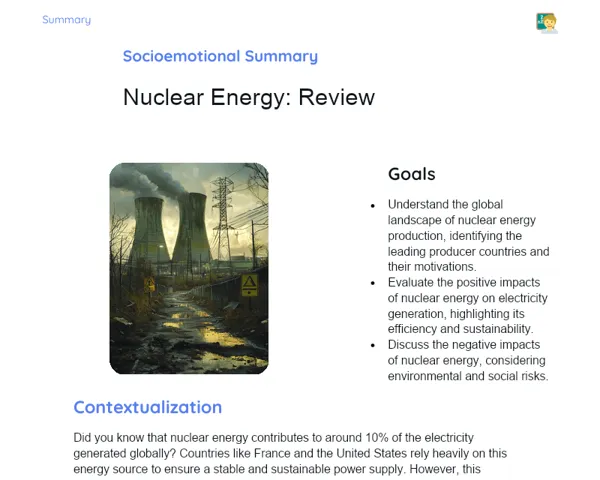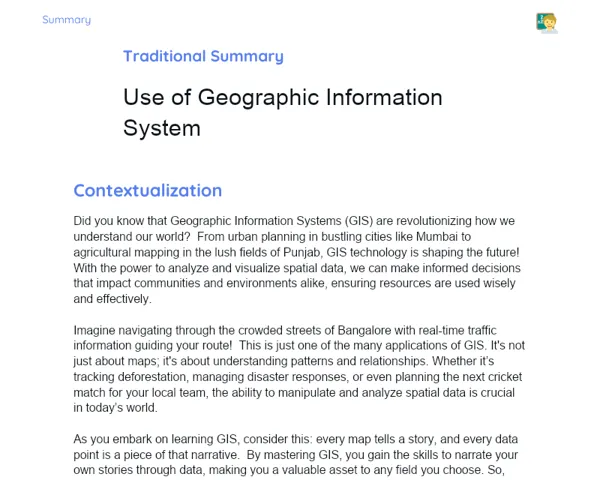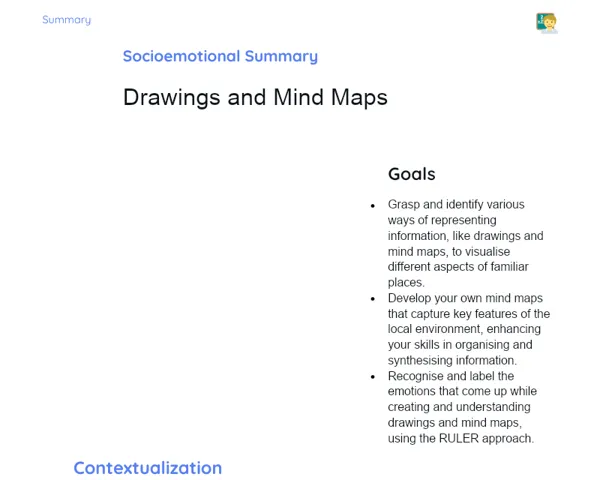Summary Tradisional | Transportation and Communication Media
Contextualization
Every day, we rely on various forms of transportation and communication to move around and stay connected with others. These methods are vital for the smooth functioning of modern society. For instance, many students travel by bus, car, or bicycle to reach school, while they use phones, the internet, and messaging apps to stay in touch with friends and family. This familiar context helps students connect lesson content with their everyday experiences.
Historically, transportation and communication methods have changed remarkably. The first successful airplane flight by the Wright brothers in 1903 changed how we travel long distances. Likewise, the first email sent in 1971 transformed our ability to communicate quickly with people all over the world. These advancements underscore the crucial roles of transportation and communication in our daily lives and the progress of society.
To Remember!
Land Transportation
Land transportation refers to systems that move across the surface of the earth, encompassing cars, buses, bicycles, and trains. These are commonly utilized in our daily lives, particularly for short to medium distances. Cars and bicycles are popular choices for individual or small group travel, while buses and trains facilitate the efficient movement of a larger number of passengers.
Cars provide convenience and flexibility, allowing people to travel according to their own schedules and preferred routes. However, they can contribute to traffic congestion and pollution in urban areas. On the other hand, bicycles are an environmentally friendly and healthy option, although their use may be restricted by distance and weather conditions.
Buses are essential for public transport, offering an economical and accessible means for city travel. Trains are crucial for intercity and regional travel, providing a fast and efficient way to get around. Both buses and trains help to minimize the number of vehicles on the road, thus reducing pollution and traffic jams.
-
Land transportation includes cars, buses, bicycles, and trains.
-
Cars provide flexibility but can lead to congestion and pollution.
-
Bicycles are eco-friendly and promote health but have distance and weather limitations.
-
Buses and trains play a vital role in mass transport and help alleviate traffic issues.
Air Transportation
Air transportation refers to methods that operate in the air, such as airplanes and helicopters. These are crucial for long-distance travel and urgent cargo transport. Airplanes are frequently used for international flights, providing speedy and efficient travel.
Commercial airlines enable millions of people to cross continents within hours, promoting tourism, business, and cultural exchanges. They also play a crucial role in transporting perishable goods and other high-value items. However, operational costs are steep, and specific infrastructure like airports is essential.
Helicopters, on the other hand, are used for shorter journeys and reach areas that are difficult to access, such as hilly terrains or islands. They are also employed for emergencies, such as rescues and medical transport. While helicopters offer versatility, they have limited capacity for passengers and cargo and can be more expensively operated.
-
Air transportation includes airplanes and helicopters.
-
Airplanes are vital for international travel and urgent deliveries.
-
Helicopters serve short trips and hard-to-access locations.
-
Air transport requires specific infrastructure and incurs high expenses.
Water Transportation
Water transportation encompasses methods that navigate over water, including ships, boats, and ferries. These means are essential for international trade, effectively transporting large volumes of goods globally.
Cargo ships carry containers, oil, natural gas, and other commodities, constituting a backbone of the global economy. Apart from trading, water transport is also significant for passenger transport in coastal areas, islands, and waterways. Ferries are commonly used for traversing short distances across water bodies, linking cities and regions.
Smaller boats are utilized for leisure activities, fishing, and transport in areas where land access is challenging. The primary advantage of water transport is its ability to carry substantial loads over long distances at a competitive cost. However, it is generally slower compared to other modes of transport and is contingent on favorable weather conditions. Ports and suitable infrastructure are essential for the smooth functioning of water transport.
-
Water transportation includes ships, boats, and ferries.
-
Essential for global trade and transporting large amounts of goods.
-
Important for passenger transport in coastal regions and islands.
-
Facilitates moving large loads at low costs but is slower and depends on climate.
Traditional Communication
Traditional communication methods were predominant before the digital age, featuring letters, radio, and television. They played a pivotal role in sharing information and connecting people throughout the 20th century.
Letters were the primary mode of written communication over long distances, allowing for the exchange of personal and professional messages. Though effective, the delivery times could vary dramatically, sometimes taking days or even weeks.
Radio transformed communication by providing instant access to news, music, and entertainment for a large audience. It became a key medium for mass communication, particularly during significant historical events, like wars and elections. In turn, television melded audio and video, enriching the experience and becoming the main source of entertainment and information in many households.
-
Traditional communication includes letters, radio, and television.
-
Letters served as written communication over distances, with varying delivery times.
-
Radio enabled instant sharing of news and entertainment to a vast audience.
-
Television brought together audio and visuals, becoming a key source of information and entertainment.
Modern Communication
Modern communication methods have arisen with the growth of digital technology and consist of the internet, mobile phones, and social media. These innovations have altered how we communicate, enabling instant information exchange on a global scale.
The internet facilitates the sending of emails, access to extensive information, and real-time conversations through messaging apps and video calls. It has connected people worldwide, allowing for remote work, online classes, and social networking.
Mobile phones have transformed from basic communication tools into versatile smartphones, integrating calls, text messages, internet access, and a plethora of applications. Social media platforms, like Facebook, Twitter, and Instagram, have revolutionized interactions by allowing for dynamic exchanges and sharing of multimedia content, thus reshaping both social and professional relationships.
These advancements have brought notable benefits, including enhanced connectivity and access to information but also present challenges like reliance on technology and concerns surrounding privacy and security.
-
Modern communication encompasses the internet, mobile phones, and social media.
-
The internet supports instant information exchange and immediate communication.
-
Mobile phones have advanced into all-in-one smartphones.
-
Social media has revamped social and professional interactions, enabling dynamic exchanges.
Key Terms
-
Land Transportation: Vehicles that move across the Earth's surface.
-
Air Transportation: Vehicles that navigate through the air.
-
Water Transportation: Vehicles that operate over water.
-
Traditional Communication: Methods of communication before the digital age.
-
Modern Communication: Communication forms that emerged through digital technologies.
Important Conclusions
In today's lesson, we explored various modes of transportation and communication, highlighting their features, benefits, and challenges. We recognized the significance of land, air, and water transport for movement and the global economy, as well as how communication methods have evolved from traditional to contemporary approaches.
The insights gained about transportation and communication are essential for understanding how individuals and goods navigate and connect within today’s world. Being able to differentiate types of transport and their purposes enriches our understanding of infrastructure and the development of cities and nations.
I encourage everyone to delve deeper into this subject, examining how technological advancements continue to reshape transportation and communication systems. This knowledge is not only vital for geographical awareness but also for nurturing informed and responsible citizens aware of the impact these technologies have on our lives.
Study Tips
-
Review your notes and summaries to reinforce the key points from the lesson.
-
Watch documentaries or educational content about the evolution of transportation and communication to visually enhance your understanding.
-
Research real-world examples of innovations in transportation and communication and share your findings with friends or family.



